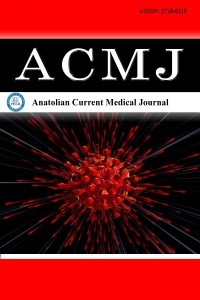1.
Wang T, Ma L, Yang DL, et al. Radiological analysis for thoracolumbar disc herniation in spinopelvic sagittal alignment: a retrospective study. Medicine (Baltimore). 2017;96(14):e6593. doi:10.1097/MD. 0000000000006593
2.
Lamartina C, Berjano P, Petruzzi M, et al. Criteria to restore the sagittal balance in deformity and degenerative spondylolisthesis. Eur Spine J. 2012;21Suppl 1(Suppl 1): S27-S31. doi:10.1007/s00586-012-2236-9
3.
Liang C, Sun J, Cui X, Jiang Z, Zhang W, Li T. Spinal sagittal imbalance in patients with lumbar disc herniation: its spinopelvic characteristics, strength changes of the spinal musculature, and natural history after lumbar discectomy. BMC Musculoskelet Disord. 2016;17(1):1-8. doi:10. 1186/s12891-016-1164-y
4.
Baran E, Karademir M. Evaluation of sagittal balance and spinopelvic parameters in patients with lumbar disc herniation. Cumhuriyet Medical Journal.2018;40(4):446-453. doi:10.7197/223.vi.502383
5.
Endo K, Suzuki H, Tanaka H, Kang Y, Yamamoto K. Sagittal spinal alignment in patients with lumbar disc herniation. Eur Spine J. 2010; 19(3):435-438. doi:10.1007/s00586-009-1240-1
6.
Rajnics P, Templier A, Skalli W, Lavaste F, Illes T. The importance of spinopelvic parameters in patients with lumbar disc lesions. Int Orthop. 2002;26(2):104-108. doi:10.1007/s00264-001-0317-1
7.
Wei X, Gengwu L, Chao C, et al. Correlations between the sagittal plane parameters of the spine and pelvis and lumbar disc degeneration. J Orthop Surg Res. 2018;13(1):137. doi:10.1186/s13018-018-0838-6
8.
Philippi M, Shin C, Quevedo S, et al. Roussouly classification of adult spinal deformity. Proc (Bayl Univ Med Cent). 2024;37(4):688-691. doi:10. 1080/08998280.2024.2334548
9.
Oh YM, Eun JP. Clinical impact of sagittal spinopelvic parameters on disc degeneration in young adults. Medicine (Baltimore). 2015;94(42):e1833. doi:10.1097/MD.0000000000001833
10.
Chun SW, Lim CY, Kim K, Hwang J, Chung SG. The relationships between low back pain and lumbar lordosis: a systematic review and meta-analysis. Spine J. 2017;17(8):1180-1191. doi:10.1016/j.spinee.2017. 04.034
11.
Menezes-Reis R, Garrido Salmon CE, Bonugli GP, et al. Association between spinal alignment and biochemical composition of lumbar intervertebral discs assessed by quantitative magnetic resonance imaging. Quant Imaging Med Surg. 2021;11(6):2428-2441. doi:10.21037/qims-20-40
12.
Roussouly P, Pinheiro-Franco JL. Biomechanical analysis of the spino-pelvic organization and adaptation in pathology. Eur Spine J. 2011;20 Suppl 5(Suppl 5):609-618. doi:10.1007/s00586-011-1928-x
13.
Nikoobakht M, Pourmahmoudian M, Gerszten PC, Pourmahmoudian M. Global sagittal angle and spinopelvic sagittal alignment: a step toward investigation of sagittal plane deformity in upper lumbar disc herniation. Br J Neurosurg. 2024;38(3):551-555. doi:10.1080/02688697.2021.1923651

